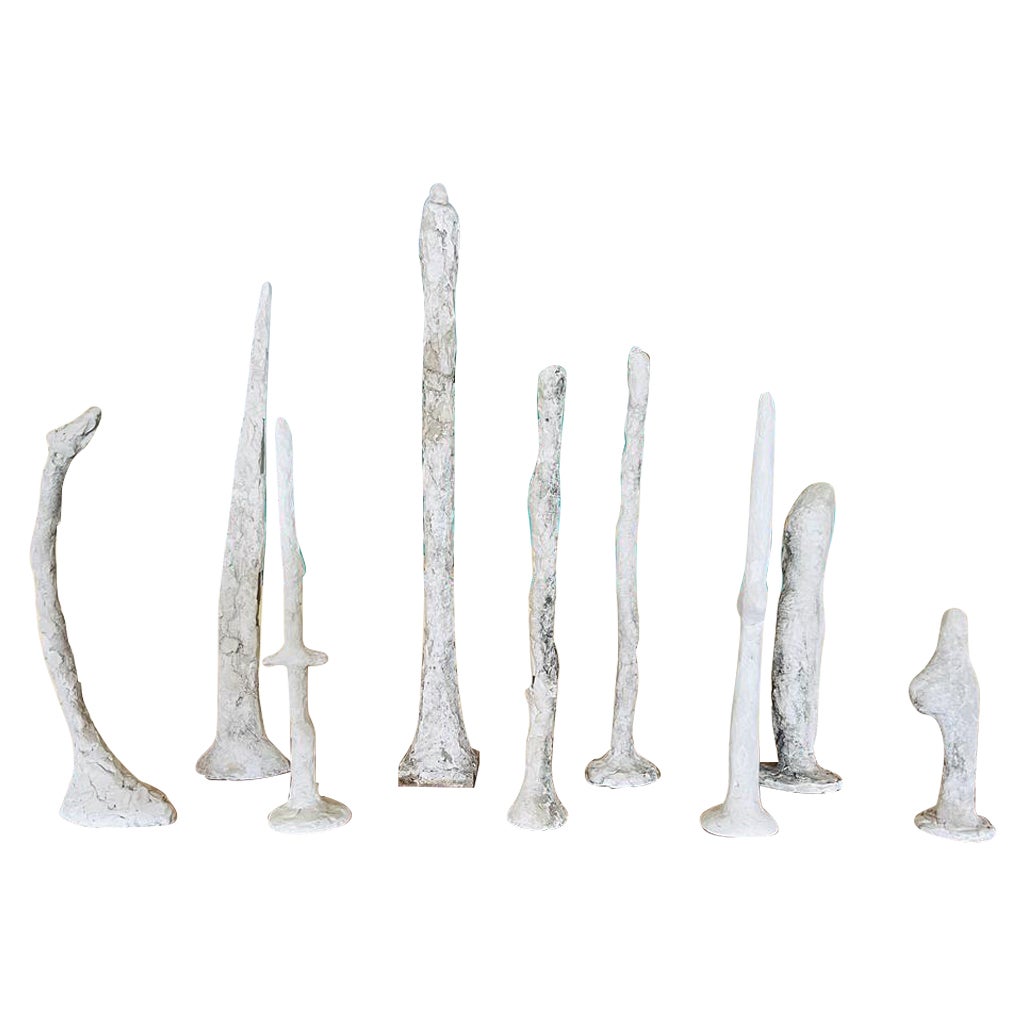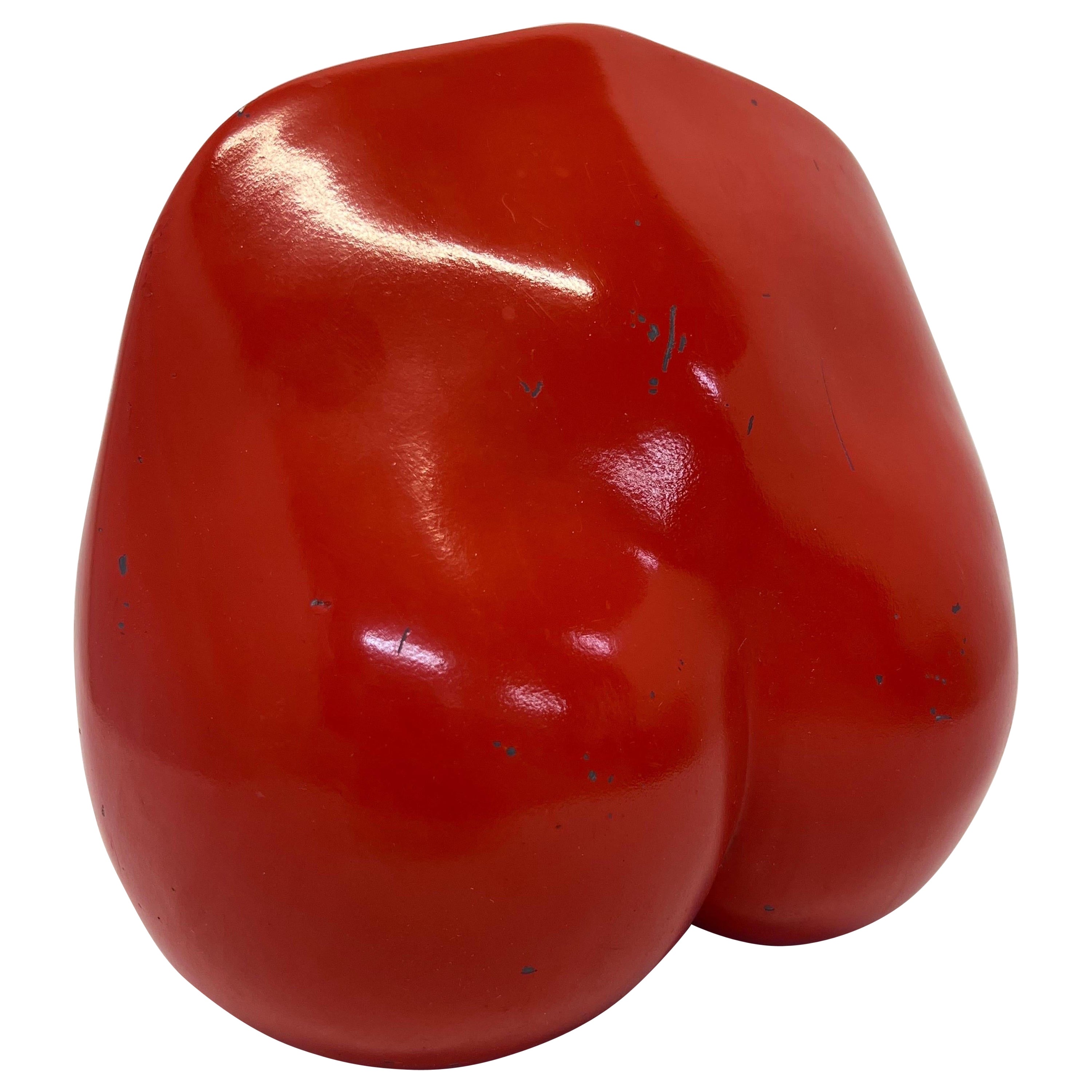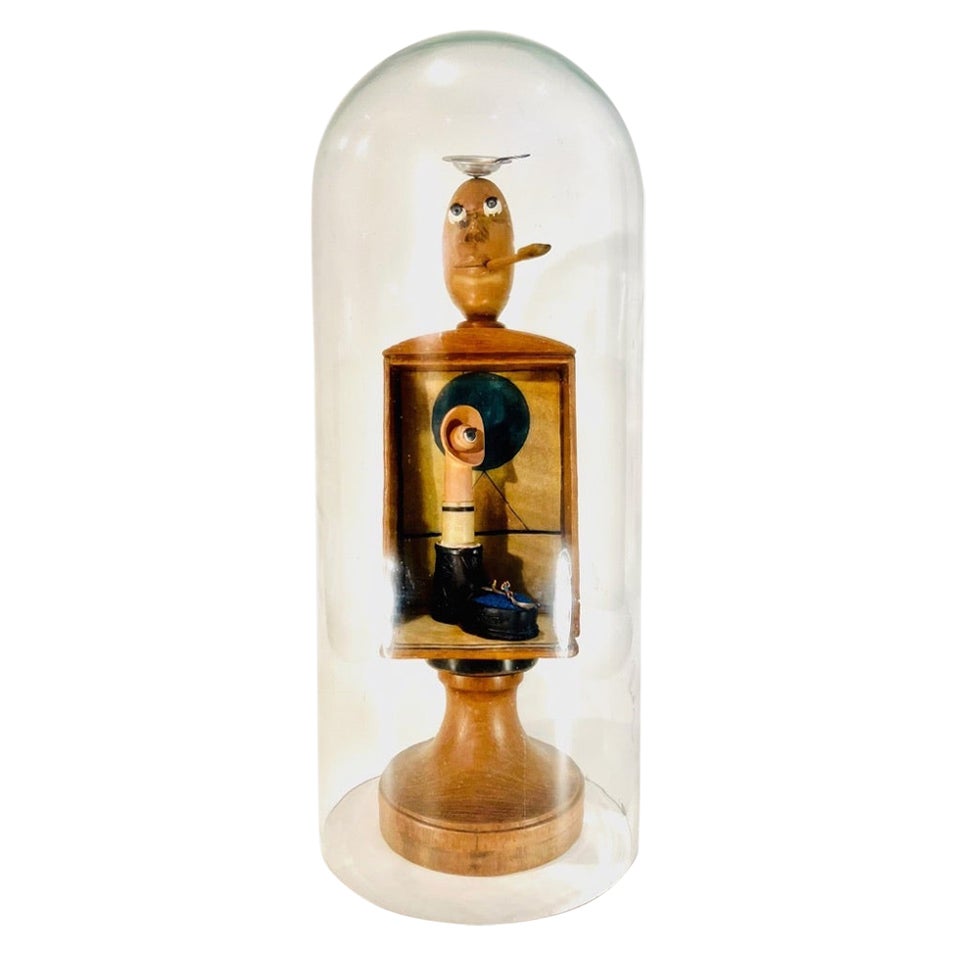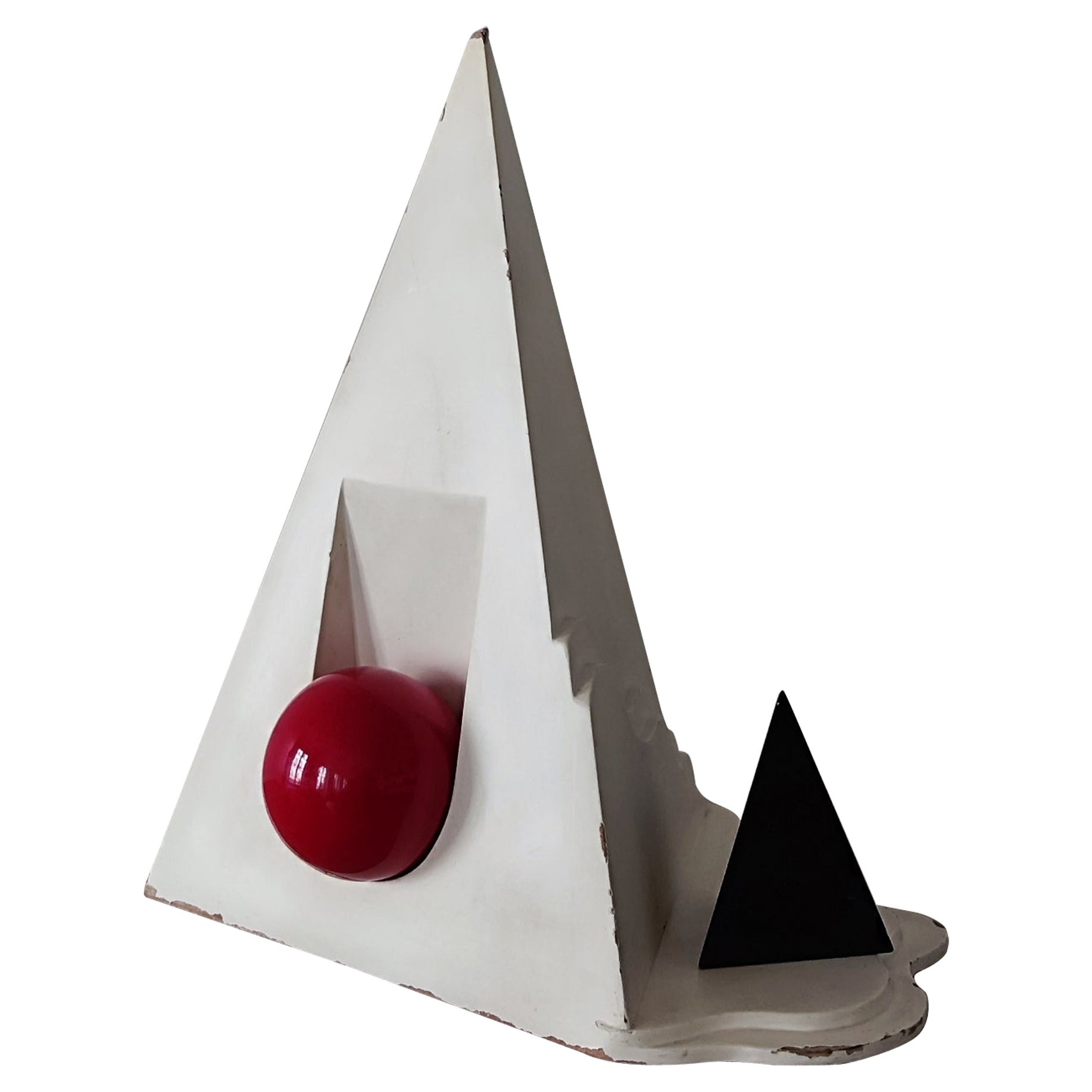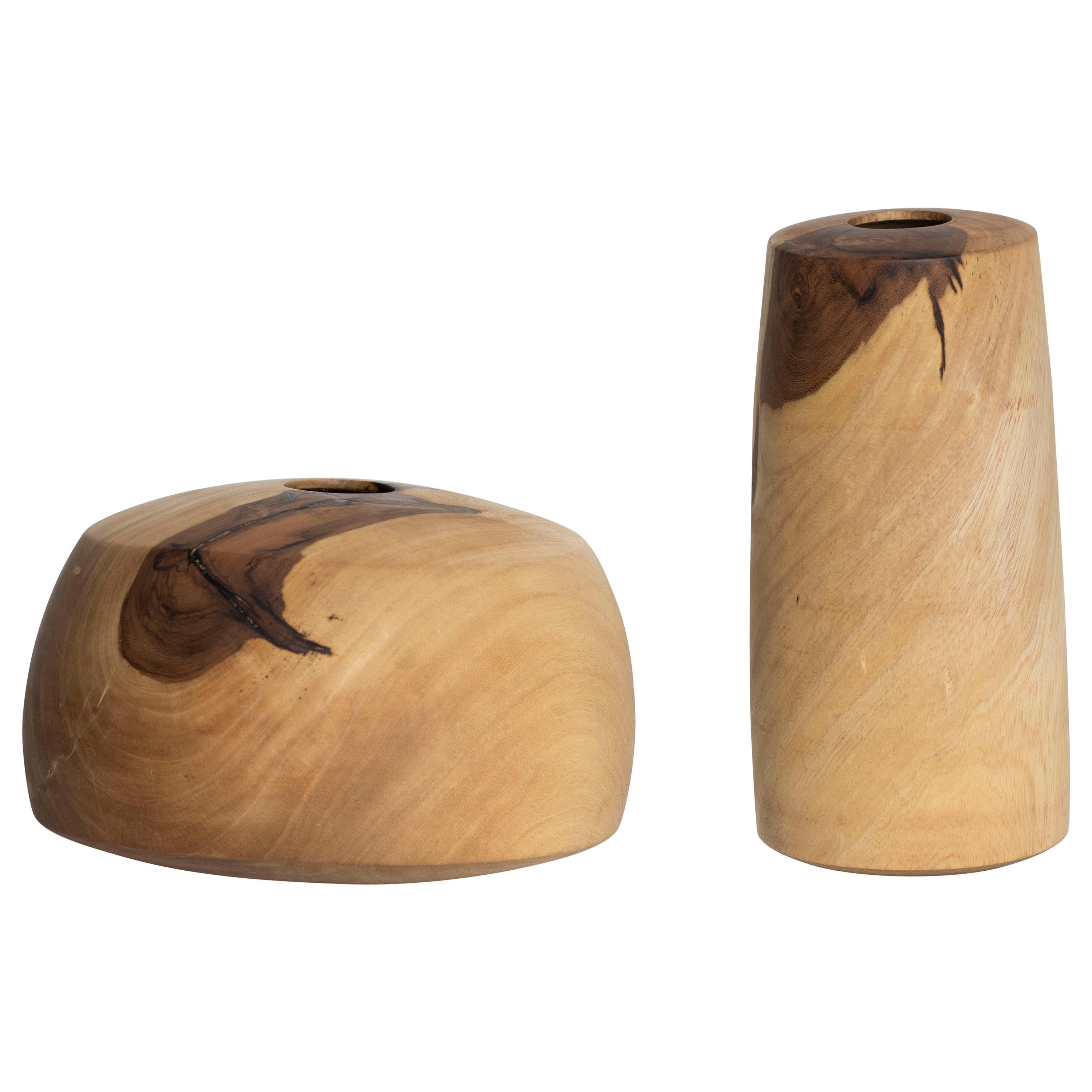Items Similar to Emanoel Araujo brazilian sculpture in fiberglass and wood polychrome circa 1980
Want more images or videos?
Request additional images or videos from the seller
1 of 7
Emanoel Araujo brazilian sculpture in fiberglass and wood polychrome circa 1980
About the Item
Incredible EMANOEL ARAUJO abstract sculpture in fiberglass and wood signed and polychrome circa 1980.
- Creator:Emanoel Araújo 1 (Artist)
- Dimensions:Height: 37.41 in (95 cm)Width: 42.13 in (107 cm)Depth: 16.93 in (43 cm)
- Style:International Style (Of the Period)
- Materials and Techniques:
- Place of Origin:
- Period:1980-1989
- Date of Manufacture:1980
- Condition:
- Seller Location:Rio De Janeiro, BR
- Reference Number:1stDibs: LU8821236994322
About the Seller
No Reviews Yet
Vetted Seller
These experienced sellers undergo a comprehensive evaluation by our team of in-house experts.
Established in 1981
1stDibs seller since 2023
Typical response time: 9 hours
- ShippingRetrieving quote...Ships From: Rio De Janeiro, Brazil
- Return PolicyA return for this item may be initiated within 14 days of delivery.
More From This SellerView All
- Remo Bernucci 1970 set of 9 totens in plaster and wood polychrome sculpture.Located in Rio De Janeiro, RJIncredible RENO BERNUCCI group of sculptures in plaster, wood polychrome with 9 pieces.Category
Vintage 1970s Brazilian International Style Abstract Sculptures
MaterialsPlaster, Wood
- Primitive brazilian stool in noble wood circa 1950 'Panther'Located in Rio De Janeiro, RJIncredible primitive brazilian stool in noble wood representing 'Panther'circa 1950Category
Vintage 1950s Brazilian International Style Animal Sculptures
MaterialsWood
- Airin Canedo brazilian multicolor sculpture circa 1990Located in Rio De Janeiro, RJIncredible AIRIN CANEDO multimaterials sculpture circa 1990.Category
1990s Brazilian International Style Mounted Objects
MaterialsMetal, Other
- Tamandua Bandeira brasilian sculpture in noble wood circa 1950Located in Rio De Janeiro, RJIncredible brasilian Tamandua Bandeira big sculpture in noble wood circa 1950Category
Vintage 1950s Brazilian International Style Animal Sculptures
MaterialsWood
- Yutaka Toyota brazilian steel and wood wall sculpture 1982By Yutaka ToyotaLocated in Rio De Janeiro, RJIncredible YUTAKA TOYOTA steel wall sculpture polychromed in blue in perfect conditions signed and dated 1982.Category
Vintage 1980s Brazilian Modern Abstract Sculptures
MaterialsSteel
- Jose Pedrosa brazilian sculpture in black bronze circa 1950 "Surfer".Located in Rio De Janeiro, RJIncredible Jose Pedrosa brazilian sculpture in black bronze circa 1950 "Surfer"Category
Vintage 1950s Brazilian Mid-Century Modern Figurative Sculptures
MaterialsBronze
You May Also Like
- Brazilian Modern Fiberglass and Lacquer Sculpture by Pietrina Checcacci, 1970sBy Pietrina CheccacciLocated in Miami, FLReddish orange lacquer over fiberglass modern sculpture by Italian-Brazilian artist Pietrina Checcacci, 1970s. Signed.Category
Late 20th Century Brazilian Modern Figurative Sculptures
MaterialsFiberglass, Lacquer
- Abstract post modern polychrome pyramid sculpture Memphis 1980, wood - SignedLocated in Paris, FRAbstract post modern polychrome pyramid sculpture, Memphis movement 1980 . Wood Signed and dated 80s . Dimensions : . As you can see in the photos, there are many gaps which in no ...Category
Vintage 1980s Hungarian Abstract Sculptures
MaterialsWood
- Wood Sculpture Brazilian DesignBy Leonardo SokoloviczLocated in New York, NYDelicate woodcraft work of Leonardo Sokolowicz.Category
2010s Brazilian Abstract Sculptures
MaterialsWood
- Vintage Rhinoceros Head Sculpture in Fiberglass, circa 1970Located in Saint-Ouen, FRVintage rhinoceros head sculpture in fiberglass, circa 1970.Category
Late 20th Century North American Mid-Century Modern Animal Sculptures
MaterialsFiberglass
- Base for sculpture. Polychromed wood.Located in Madrid, ESGallon base. Carved and polychrome wood. Inspired by models from the 17th century. Rectangular base with a similar cushion on the top (decorated with plant elements) and complex line...Category
21st Century and Contemporary Spanish Baroque Figurative Sculptures
MaterialsOther
- Sculpture in Polychrome Wood Representing Saint Anthony HermitLocated in Saint-Ouen, FRSculpture In Polychrome Wood Representing Saint Anthony Hermit Origin : East of France Period : End of the 15th century Measures: Height : 97 cm Width : 32 cm Depth : 26 cm Polychrome wood The saint is represented by an old, bearded man, dressed in a hooded monk’s habit over the tunic of his religious order. He is stood upright, holding an open book, La Règle des Antonnites, in his right hand. In the other hand, he is holding a staff in the form of the Greek letter tau with a rosary hanging down over it. At his feet lies a pig wearing a small bell around its neck. He rests on his right leg, whilst the left advances forward as if he were about to start walking. His belted tunic, forming several rectilinear pleats, is covered by a habit which is open only at the waist, therefore revealing these pleats. He is also wearing a hooded scapular over his shoulders. His thick hair escapes from under a distinctive hat, forming a collection of finely sculpted ringlets. This fine detail is also applied to the four long ringlets of his superb beard, which sit just below the shorter ones of his moustache. His face is a picture of harmony, with lowered eyes and his small mouth lost amongst the abundance of hair. At his feet on a pedestal of flames, hinting to the fire of Saint Anthony no doubt, a pig trying to scratch its ear. Born in 251 in Upper Egypt, he withdrew into solitude at a very young age. He would have been plagued in the desert with extremely diabolical temptations. He payed a visit to Saint Paul the hermit towards the end of his life. He was the dean of the Thébaïde anchorites, who was miraculously fed by a crow. On the day that Saint Anthony visited, the crow brought two portions of bread in its beak instead of one. Some time after, having learnt of the death of his venerable brother, Saint Anthony went to bury him with the help of two lions. The King of Catalonia pleaded to come and exorcise his posessed wife and children. He left Thébaïde for Barcelona. He appeared at the house of the provost André, bringing him a sow in his mouth, a monstrous piglet born without eyes. André wanted to kill it but Anthony stopped him, telling him that the poor beast wanted to ask for healing, as the King had done for his offspring. He made a sign of the cross on the piglet and it suddenly acquired its sight and the members which it did not have at birth. After which, André, guided by Saint Anthony, exorcised the Queen of Catalonia in the same way whilst she knelt at his feet. Théophile discovered the body of Saint Anthony wrapped in a palm fibre tunic which he had been given by Saint Paul the Hermit. In the Red Sea Desert there are two Coptic, IV century, monasteries which stand next to each other, one dedicated to Saint Anthony, the other to Saint Paul the Hermit. They are the oldest monasteries in the Christian world. The body of the famous hermit was transported to Constantinople and would have been transferred into the abbaye, Saint Antoine-en-Viennois, Dauphine. The Antonnite Order was a charitable order which specialised in treating contagious diseases. The fire of Saint Anthony, was identified by doctors as a grangrenous ergotism, caused by a diet of rye bread contaminated with the parasite ergot. The effect of this is the drying out of hands and feet which then need amputation, the plague and then later syphilis. All the skin diseases came from Saint Anthony. Saint Anthony’s pilgrimage to Dauphine rivaled that of Saint Jacques to Compostela. Thanks to the various commanderies created by the mother house, Saint Anthony’s cult spread throughout Christianity. In order to maintain commanderies and their hospitals, the Antonnites resorted to pig farming. They enjoyed having the benefit of letting their pigs roam freely through the streets of the villages, with little bells round their necks that had a recognisable chime so that they were able to find them. This privilege was very envied by other monastic Orders. Saint Anthony was the patron saint of several crafts such as basket makers and gravediggers. However it is to the pig that he owes the majority of his patronages; pigkeepers, pig sellers, butchers, porc butchers, brush makers who use pig bristle and bell-ringers because of the pig bells...Category
Antique 15th Century and Earlier Figurative Sculptures
MaterialsWood
Recently Viewed
View AllMore Ways To Browse
Polychrome Sculptures
Circa Brazil
Polychrome Wood Sculpture
Jere Ribbon
Large French Decorative Totem
Leong Leong
Loom Sculpture
Mendini Totem
Murano Christmas
Murano Glass Christmas
Richard Serra Sculptures
Theodore Annee
Velizar Mihich Vasa
Anchor Stone Blocks
C Jere Tree Sculpture
Gaudi Handles
Iron Studio Art Metalwork
Jere Ribbon Sculpture
